Hi Mum!
This weekend I've been visiting Santiago de Compostela with Bally and Tenderheartbear. Santiago, as the capital of Galicia, exemplifies all the tradition and rich gastronomy of a cuisine admired for the quality of its sea and farm products.
Santiago de Compostela was declared a World Heritage City by UNESCO in 1985, in view of its urban beauty and monumental integrity, as well as the profound echoes of its spiritual significance as an apostolic sanctuary and the destination of the Middle Ages' most important religious and cultural movement: the Way of St. James prilgrimage. Since then, numerous prizes and awards have been added to the worldwide recognition of the magnificent preservation and habitability of Compostela's heritage.
Until the 9th century, the city of Santiago did not exist as such. However, archaeological excavations have shown that the present-day location of the old town was the site, in antiquity, of a Roman town that acquired certain importance and remained until the 7th century, forming part of the Swabian kingdom during some time. In the 1st century, alongside the walled enclosure of the Roman “civitas”, a pagan mausoleum was erected that subsequently gave rise to the cathedral. It has been demonstrated that, in that same century, three Christian martyrs were buried in the mausoleum, which became an established centre of worship, as shown by the nearby Christian cemetery that was used until the 7th century.
The cathedral borders the main plaza of the old and well-preserved city. Across the square is the Pazo de Raxoi (Raxoi's Palace), the town hall and seat of the Galician Xunta, and on the right from the cathedral steps is the Hostal dos Reis Católicos, founded in 1492 by the Catholic Monarchs, Isabella of Castille and Ferdinand of Aragon, as a pilgrim's hospice (now a parador). The Obradoiro façade of the cathedral, the best known, is depicted on the Spanish euro coins of 1 cent, 2 cents, and 5 cents (€0.01, €0.02, and €0.05).
Santiago is the site of the University of Santiago de Compostela, established in the early 16th century. The main campus can be seen best from an alcove in the large municipal park in the centre of the city.
Within the old town there are many narrow winding streets full of historic buildings. The new town all around it has less character though some of the older parts of the new town have some big apartments in them.
Santiago de Compostela has a substantial nightlife. Divided between the new town (la zona nueva or ensanche) and the old town (la zona vieja or a zona vella), one can often find a mix of middle-aged residents and younger students running throughout the city until the early hours of the morning. Radiating from the center of the city, the historic cathedral is surrounded by paved granite streets, tucked away in the old town, and separated from the newer part of the city by the largest of many parks throughout the city, Parque da Alameda. Whether in the old town or the new town, party-goers will often find themselves following their tapas by dancing the night away.
Santiago gives its name to one of the four military orders of Spain: Santiago, Calatrava, Alcantara and Montesa.
According to legend, the apostle Saint James the Greater brought the Message of Christ to the Celts in the Iberian Peninsula. In 44 AD he was beheaded in Jerusalem. His remains were later brought back to Galicia, Spain. Following Roman persecutions of Spanish Christians, his tomb was abandoned in the 3rd century. Still according to legend, this tomb was rediscovered in 814 AD by Pelayo, a hermit, after witnessing strange lights in the night sky. Bishop Theodemir of Iria recognized this as a miracle and informed the Asturian king Alfonso II (791-842). The king ordered the construction of a chapel on the site. Legend has it that the king became the first pilgrim to this shrine. This was followed by a first church in 829 AD and again in 899 AD by a pre-Romanesque church, at the order of king Alfonso III of León, causing the gradual development of a major place of pilgrimage. In 997 this early church was reduced to ashes by Mohammed ibn-Abi Amir (938-1002), army commander of the caliph of Córdoba, Spain. The gates and the bells, carried by Christian captives to Córdoba, were added to the Aljama Mosque. When Córdoba was taken by king Ferdinand III of Castile in 1236, these same gates and bells were then transported by Muslim captives to Toledo, to be inserted in the cathedral Santa Maria.
Construction of the present cathedral began in 1075 under the reign of Alfonso VI of Castile (1040-1109) and the patronage of bishop Diego Peláez. It was built according to the same plan as the monastic brick church of Saint Sernin in Toulouse, probably the greatest Romanesque edifice in France. It was built mostly in granite. Construction was halted several times and, according to the Liber Sancti Iacobi, the last stone was laid in 1122. But by then, the construction of the cathedral was certainly not finished. The cathedral was consecrated in 1128 in the presence of king Alfonso IX of Leon.
According to the Codex Calixtinus the architects were "Bernard the elder, a wonderful master", his assistant Robertus Galperinus and, later possibly, "Esteban, master of the cathedral works". In the last stage "Bernard, the younger" was finishing the building, while Galperinus was in charge of the coordination. He also constructed a monumental fountain in front of the north portal in 1122.
The church became an episcopal see in 1075 and, due to its growing importance as a place of pilgrimage, it was soon raised to an archiepiscopal see by pope Urban II in 1100. A university was added in 1495.
The cathedral has been embellished and expanded between the 16th and the 18th century.
So here you have my pictures:
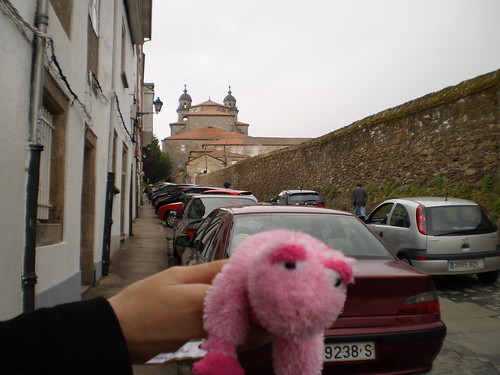

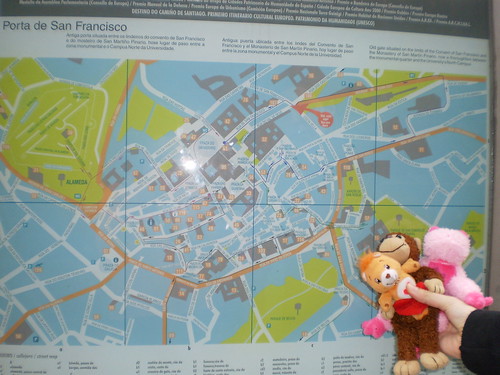
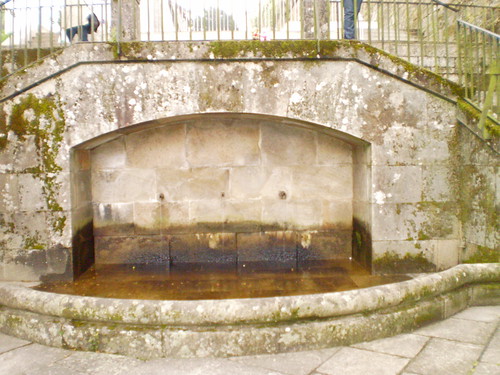

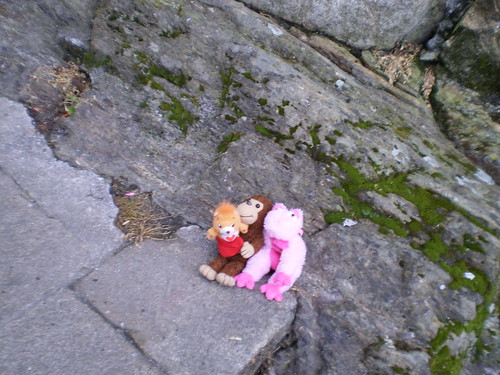

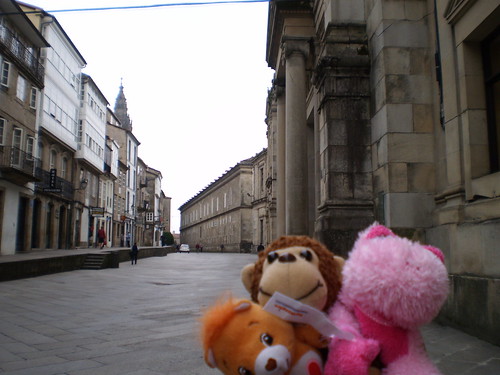

Here is the Cathedral's most famous facade.
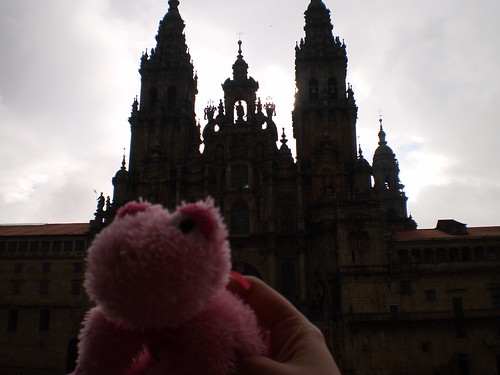


This is another entrance: Puerta de las Platerías:
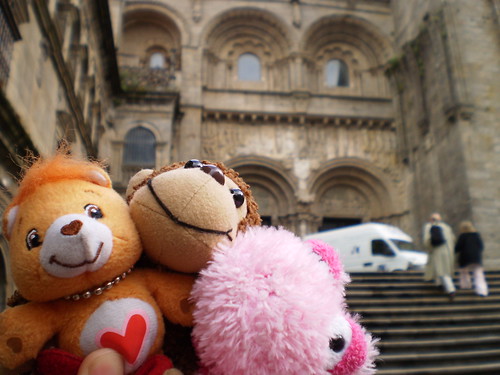
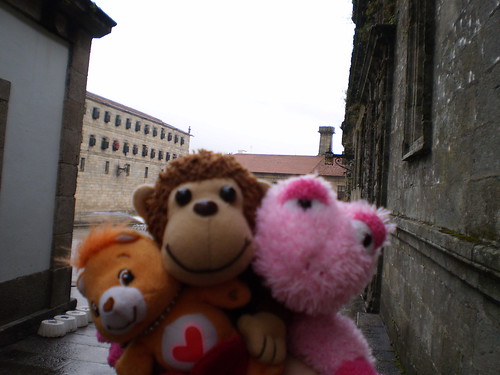
This is the entrance Puerta Santa (Holy Door) that it's open just in Holy year (when the festivity of the Cathedral is on Sunday, next year)
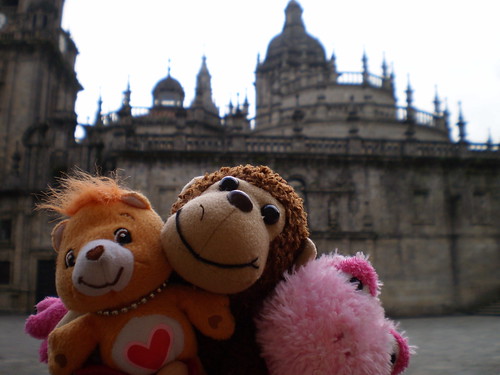
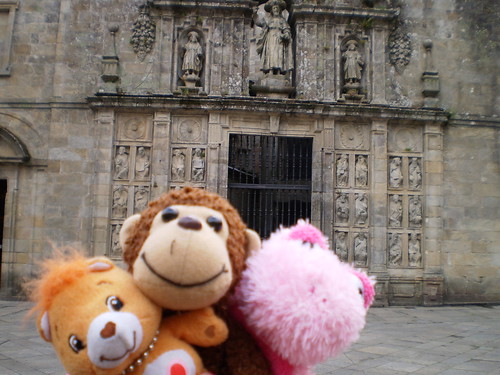

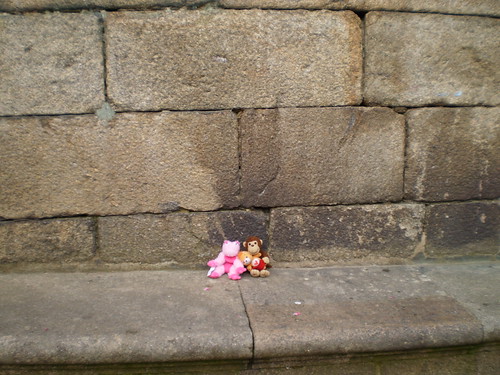
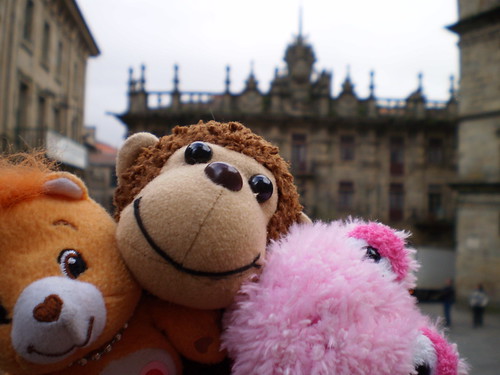
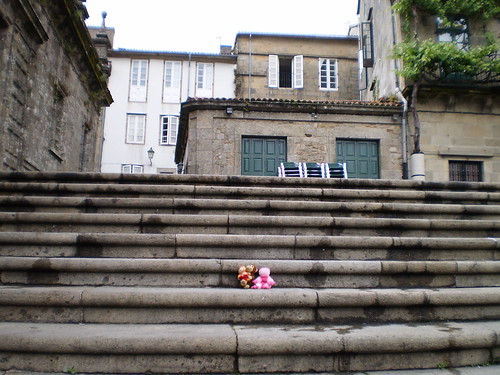
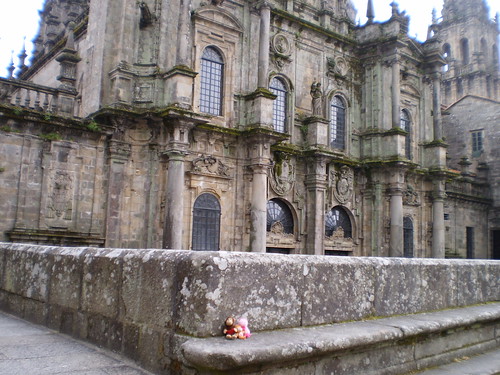

This is a typical view of the Old Town:
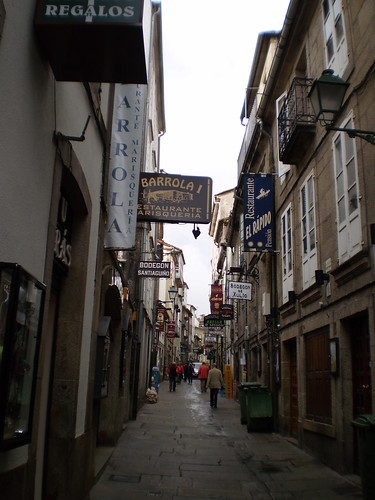
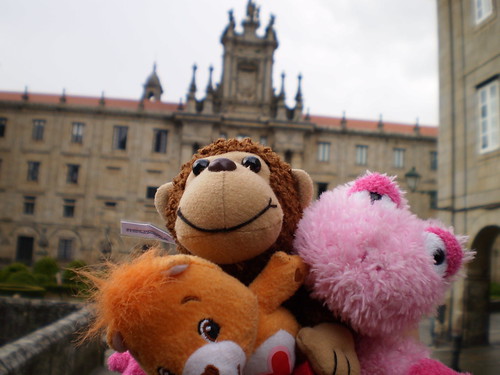

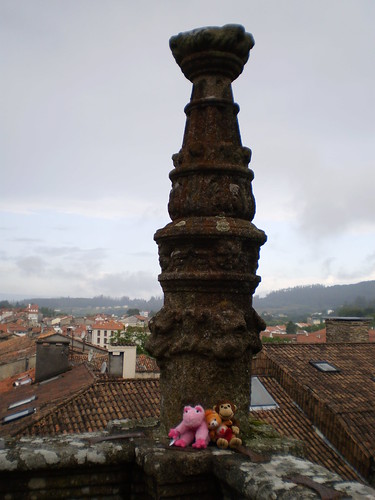
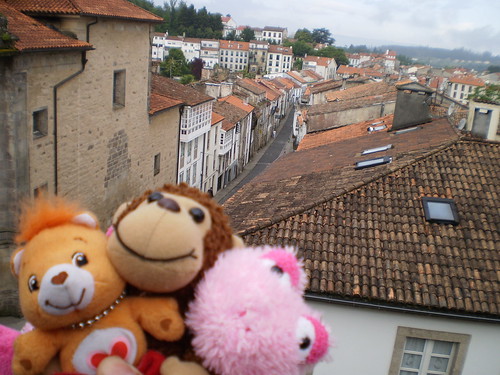

As you can see, it was a quite busy weekend!
Lots of love,
Baubles



